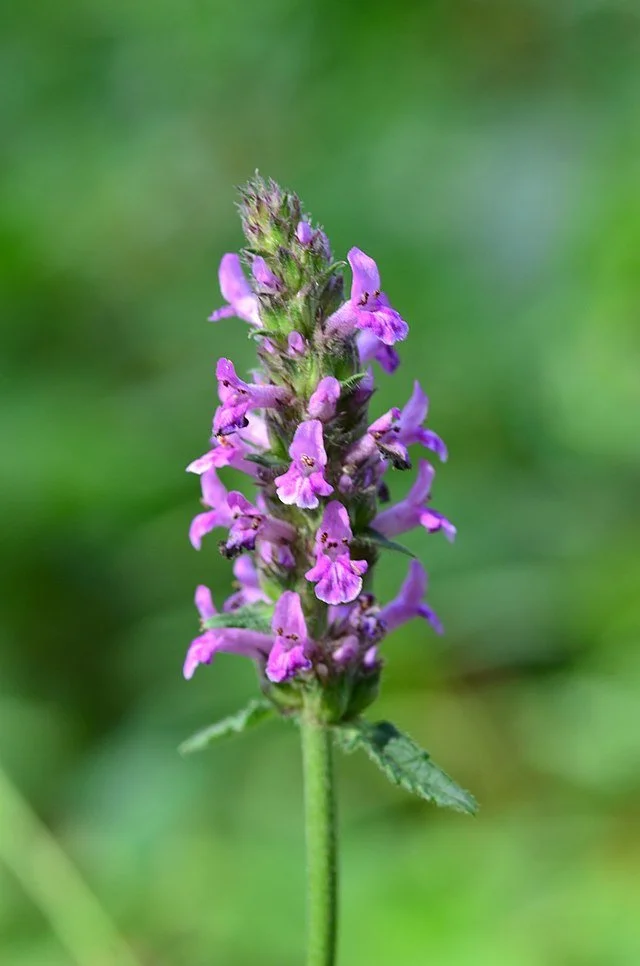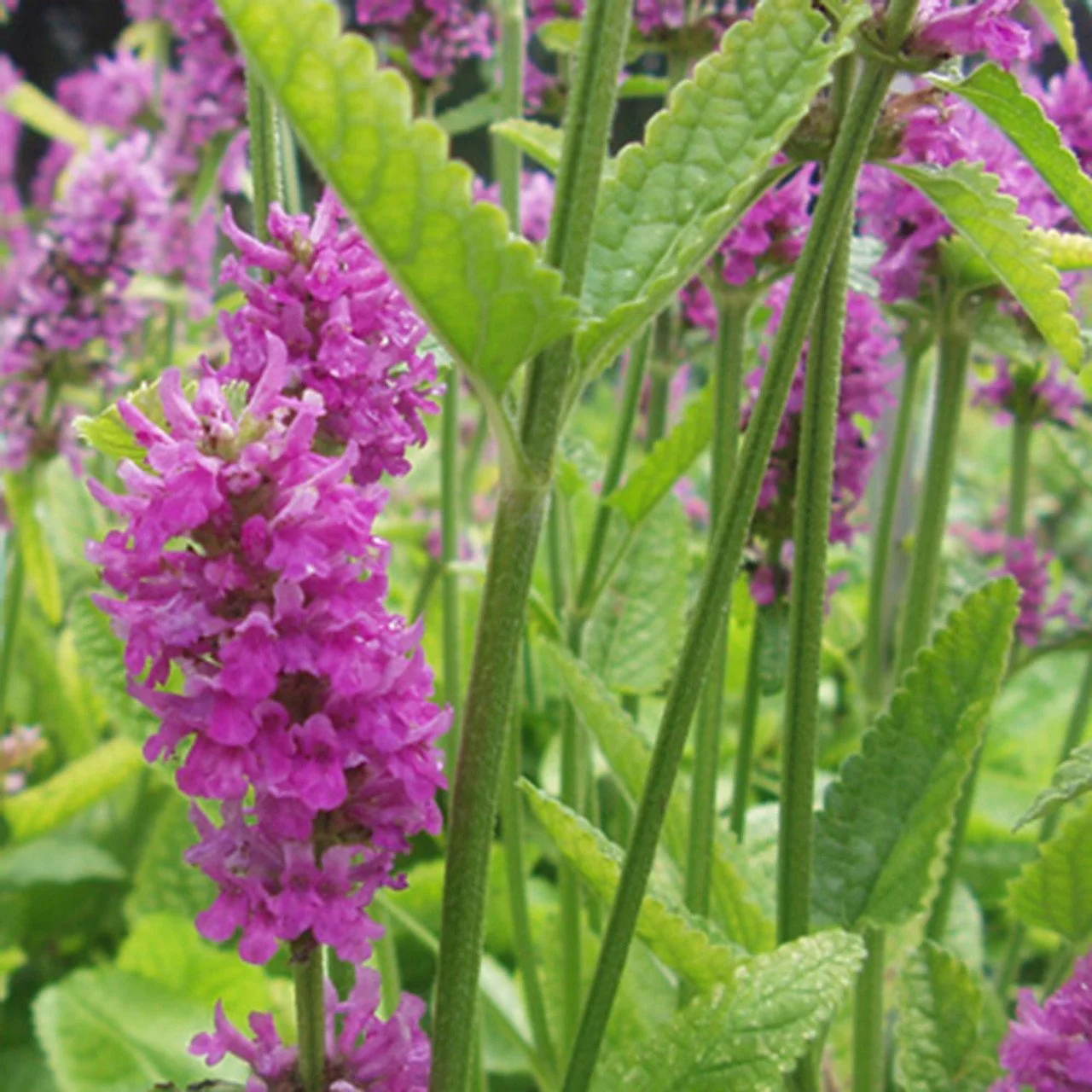Plant Profile: Bettony
If you’re looking to add a pop of color and texture to your perennial garden, look no further than betony. This lesser-known but highly versatile perennial is a great addition to any garden, offering beautiful spikes of purple flowers and lush green foliage that can thrive in a variety of conditions. Whether you’re an experienced gardener or a novice just starting your landscape design journey, betony is a hardy plant that’s relatively easy to grow and maintain.
In this guide, we’ll walk you through everything you need to know about planting and caring for betony, from choosing the right location to ensuring your plant thrives year after year.
What is Betony?
Betony (Stachys officinalis) is a hardy, herbaceous perennial that belongs to the mint family (Lamiaceae). Native to Europe and parts of Asia, betony has long been valued for its medicinal properties as well as its ornamental appeal. The plant typically grows to about 12 to 24 inches in height, with slightly hairy, heart-shaped leaves and tall spikes of tubular flowers that bloom in shades of pink, purple, or white.
Betony is often found in meadows, woodlands, and grassy areas, making it an excellent choice for naturalistic garden designs. It’s also a favorite among pollinators, attracting bees, butterflies, and other beneficial insects to your garden.
Choosing the Right Location
When it comes to planting betony, location is key. This perennial prefers full sun to partial shade, so it’s important to choose a spot in your garden that receives at least 4 to 6 hours of sunlight each day. While betony can tolerate a range of light conditions, too much shade may result in fewer flowers and leggy growth.
Betony thrives in well-drained soil with a neutral to slightly acidic pH. If your garden soil is heavy or clay-like, consider amending it with compost or other organic matter to improve drainage. Betony is relatively drought-tolerant once established, but it’s still a good idea to provide consistent moisture, especially during the first growing season.
Planting Betony
Betony can be planted in either spring or fall, depending on your climate and garden conditions. To plant betony, start by digging a hole that’s about twice the width of the plant’s root ball and just as deep. If you’re planting multiple betony plants, space them about 12 to 18 inches apart to allow for proper air circulation and growth.
Once you’ve placed the plant in the hole, backfill with soil and gently firm it down to remove any air pockets. Water the plant thoroughly after planting to help it settle in. Mulching around the base of the plant with organic mulch, such as shredded leaves or straw, can help retain moisture and suppress weeds.
Caring for Betony
One of the reasons betony is such a popular choice for perennial gardens is its low-maintenance nature. With just a little care and attention, betony will reward you with lush foliage and vibrant blooms year after year.
Here are some tips for keeping your betony plants healthy and happy:
Watering: Betony prefers evenly moist soil, so be sure to water regularly, especially during dry spells. However, be careful not to overwater, as betony doesn’t like soggy soil. A good rule of thumb is to water deeply when the top inch of soil feels dry to the touch.
Fertilizing: Betony isn’t a heavy feeder, so it doesn’t require much fertilizer. A light application of balanced, slow-release fertilizer in the spring should be sufficient to keep your plants thriving. Alternatively, you can work compost into the soil around your plants to provide a steady supply of nutrients.
Pruning: Deadheading spent flowers can encourage betony to produce more blooms throughout the growing season. In late fall or early spring, you can also cut back the foliage to the ground to tidy up the plant and encourage fresh growth.
Pest and Disease Control: Betony is generally resistant to most pests and diseases, making it a great choice for low-maintenance gardens. However, like all plants, it can occasionally fall victim to aphids, slugs, or powdery mildew. Keeping your garden clean and well-ventilated, along with proper watering practices, can help prevent these issues.
Dividing Betony: Over time, betony can form large clumps that may need to be divided to maintain vigor. You can divide betony plants every 3 to 4 years in either spring or fall. To do this, carefully dig up the plant and separate the root clumps, replanting the divisions in a new location.
Incorporating Betony into Your Garden Design
Betony’s attractive foliage and colorful flowers make it a versatile addition to any garden design. Whether you’re looking to fill in a shady corner, create a stunning border, or add interest to a rock garden, betony is up for the task.
Here are a few ideas for incorporating betony into your garden:
Shade Garden: Betony’s tolerance for partial shade makes it a perfect candidate for shady spots in your garden. Pair it with other shade-loving perennials like hostas, ferns, and astilbes for a lush, layered look.
Perennial Border: Betony’s upright growth habit and striking flowers make it a great choice for the middle of a perennial border. Combine it with taller plants like delphiniums or ornamental grasses for a dynamic and visually appealing garden design.
Cottage Garden: Betony’s charming, old-fashioned appeal fits right in with a cottage garden aesthetic. Plant it alongside other cottage garden favorites like foxgloves, roses, and lavender for a truly enchanting display.
Wildlife Garden: If you’re looking to attract pollinators to your garden, betony is a must-have. Its nectar-rich flowers are a magnet for bees, butterflies, and other beneficial insects, making it a great addition to any wildlife-friendly garden.
Final Thoughts
Betony is a beautiful and versatile perennial that deserves a place in every garden. Its attractive foliage, vibrant flowers, and low-maintenance nature make it an ideal choice for gardeners of all skill levels. Whether you’re looking to add interest to a shady corner, create a stunning perennial border, or attract pollinators to your garden, betony is a plant that delivers on all fronts.
So why not give betony a try in your garden this year? With a little care and attention, you’ll be rewarded with a lush, colorful display that will bring joy to your garden for years to come. Happy gardening!



